
Until recently, the picture was little studied: it was attributed to the so-called “theatrical scenes” of the artist, but could not accurately establish the plot of the work. From the 18th century to the present, the painting changed eight different names.
Most often in the literature there is “Coquette”, appropriated to her by Tomassen, who in the 18th century engraved the painting and placed under the image a small poem beginning with these words. She was also called “Actors of the Italian Theater”, as the depicted tried to see the traditional heroines of comedy del arte – Rosauro and Columbine, their cunning and defeated servant Skapan and the strict old Pantalone. However, the study of a large number of preparatory studies allowed to clarify the genre and identify the depicted.
Comparing these Watteau drawings with those that reproduce absolutely certain people, it was possible to establish the following: a young woman in a high cap in the left part of the picture is the actress Christina Antoinette Charlotte Demar, who at one time conquered Parisians. This attractive and talented actress from the age of eight appeared in “Comedy France” and was famous for its perfection of performance, pleasant appearance, good voice, intelligence and sparkling gaiety. She performed both classical and comedic roles. Especially successful was Demar in Duncour’s play Three Cousins.
The old man, an actor of the same theater, Pierre Lenoir La Torilier, who is said to have learned acting lessons from Moliere himself, is depicted against her. By the time Watteau could know La Torillera, the latter was famous for his comic roles of strict and mean fathers, jealous elderly husbands, rogue servants, rustic peasants. He played in Duncour’s play as well. The personality of the young man in the beret was the most difficult to determine. With him, Watteau performed many drawings. Among them, one is considered the portrayal of the actor “Comedie Francaise” Philip Poisson.
The name of the young girl in the striped dress is not yet established. Thus, with the help of a careful study of sketches for the Hermitage painting, it was possible, first, to determine its genre – it turned out to be a group portrait of the actors of the French comedy theater who played in the play Three Cousins, and secondly, to establish their names. This group portrait is exceptional in the artist’s work. The picturesque qualities of the work are very high. It attracts the viewer with a gentle and at the same time juicy color and truthfulness of the images.
Despite the small size, the picture makes an impression significant, thanks to a thoughtful balanced composition. The special expressiveness of the characters is explained by the fact that Watteau knew every one well-known. The painting was acquired in 1772 from the heirs of a friend and patron of Watteau Pierre Croz, who contributed a lot to the development of the artist’s talent.
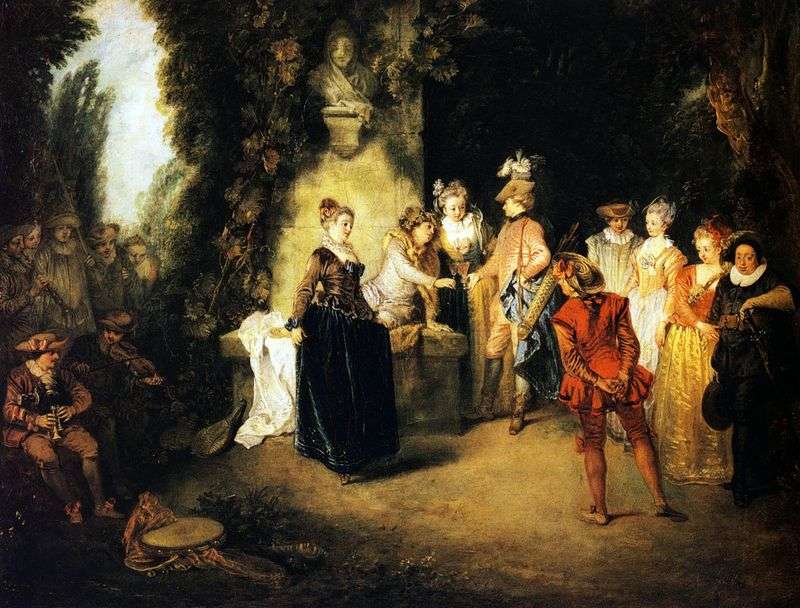 French Comedy by Jean Antoine Watteau
French Comedy by Jean Antoine Watteau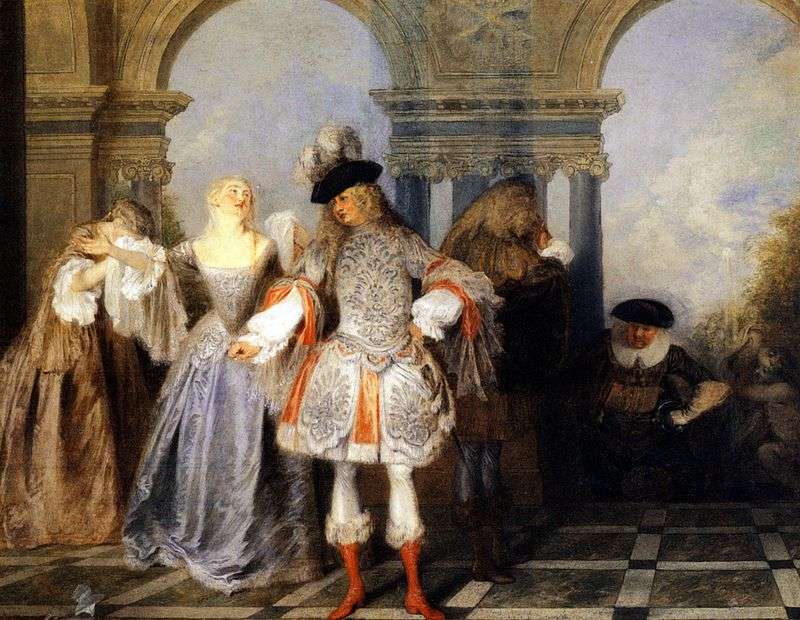 The scene of the French comedy by Jean Antoine Watteau
The scene of the French comedy by Jean Antoine Watteau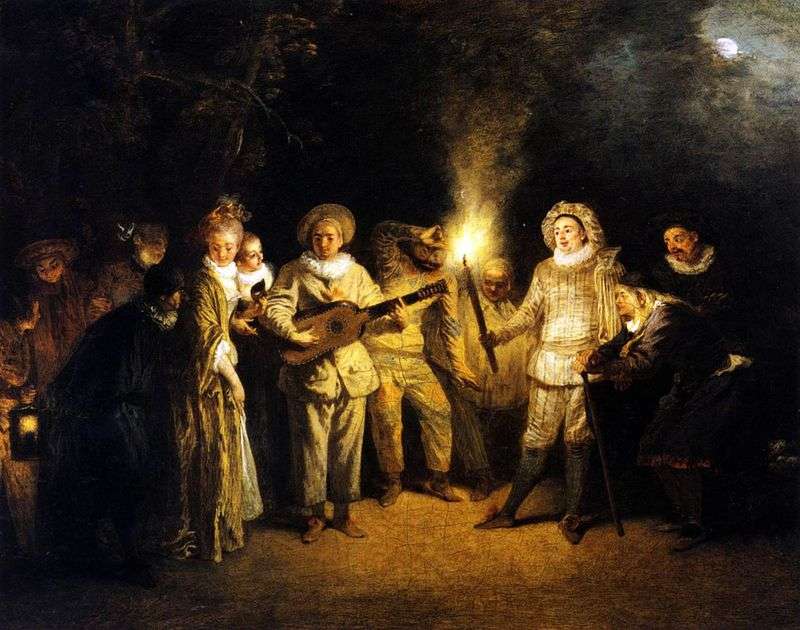 Italian comedy del arte by Jean Antoine Watteau
Italian comedy del arte by Jean Antoine Watteau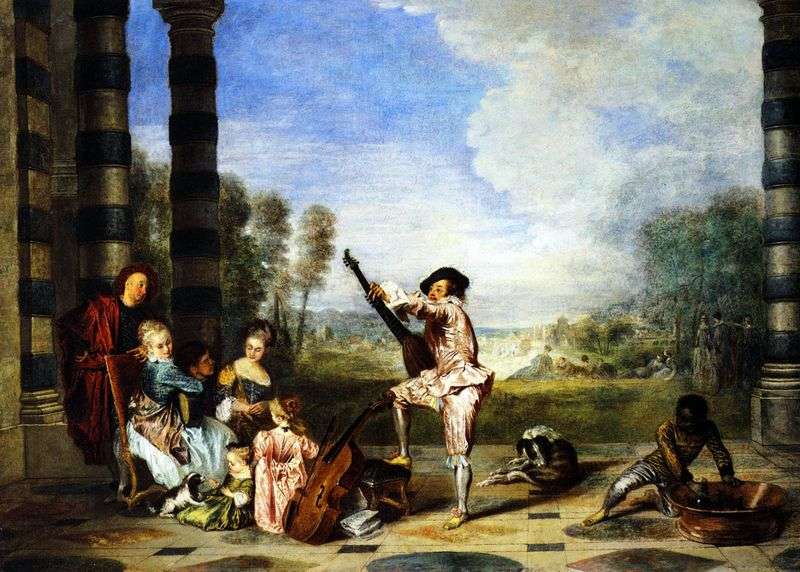 Joy of life by Jean Antoine Watteau
Joy of life by Jean Antoine Watteau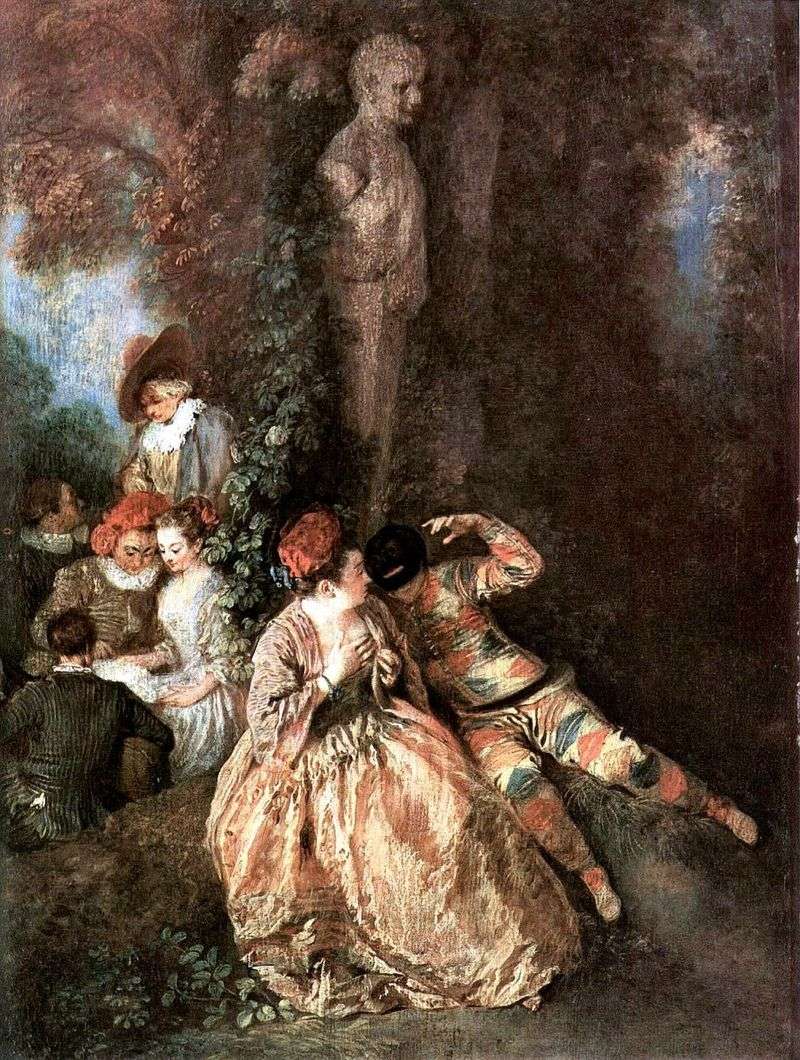 Gallant Harlequin and Colombina by Jean Antoine Watteau
Gallant Harlequin and Colombina by Jean Antoine Watteau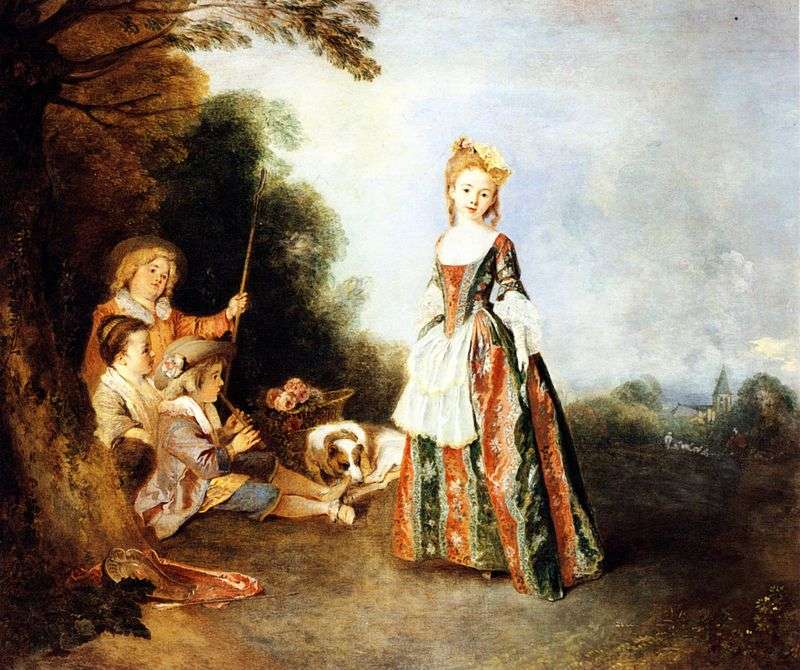 Dance by Jean Antoine Watteau
Dance by Jean Antoine Watteau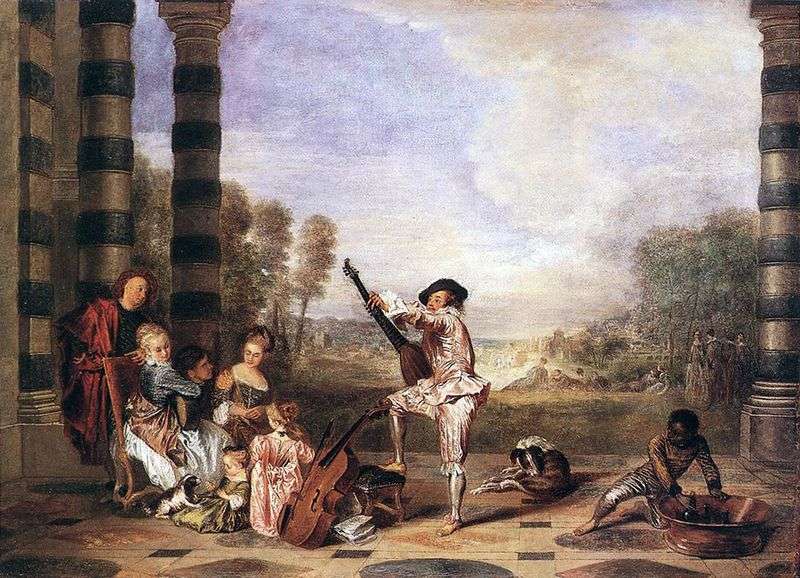 Musical party in the summer theater by Jean Antoine Watteau
Musical party in the summer theater by Jean Antoine Watteau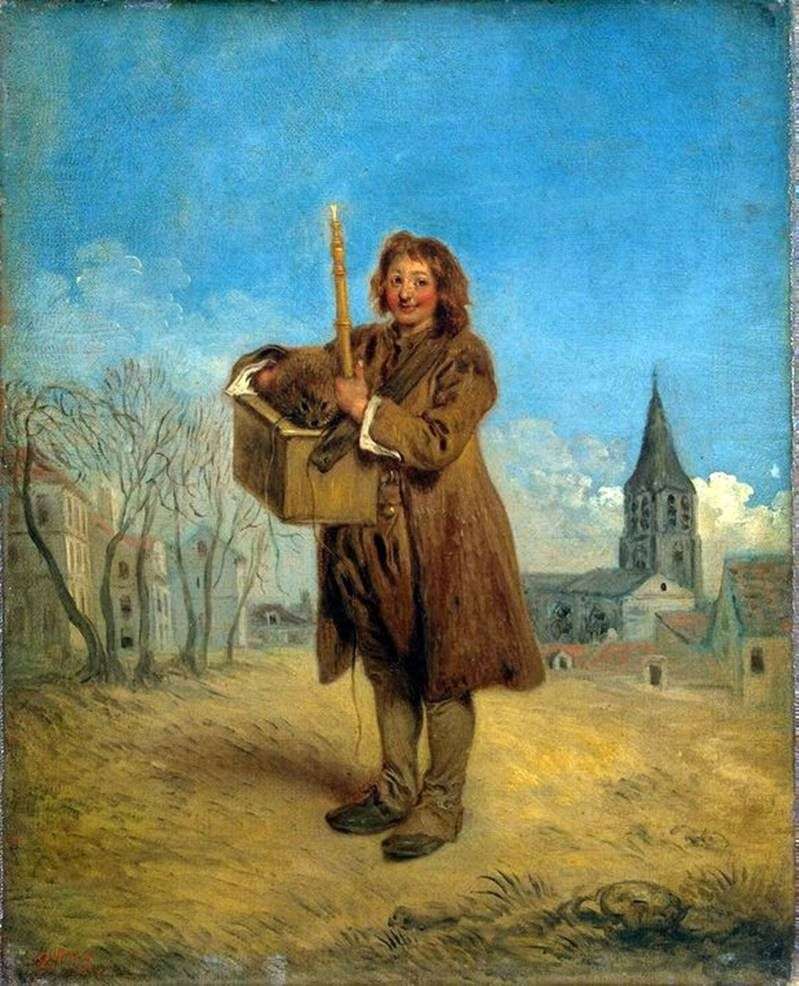 Savoyard with marmot by Jean Antoine Watteau
Savoyard with marmot by Jean Antoine Watteau